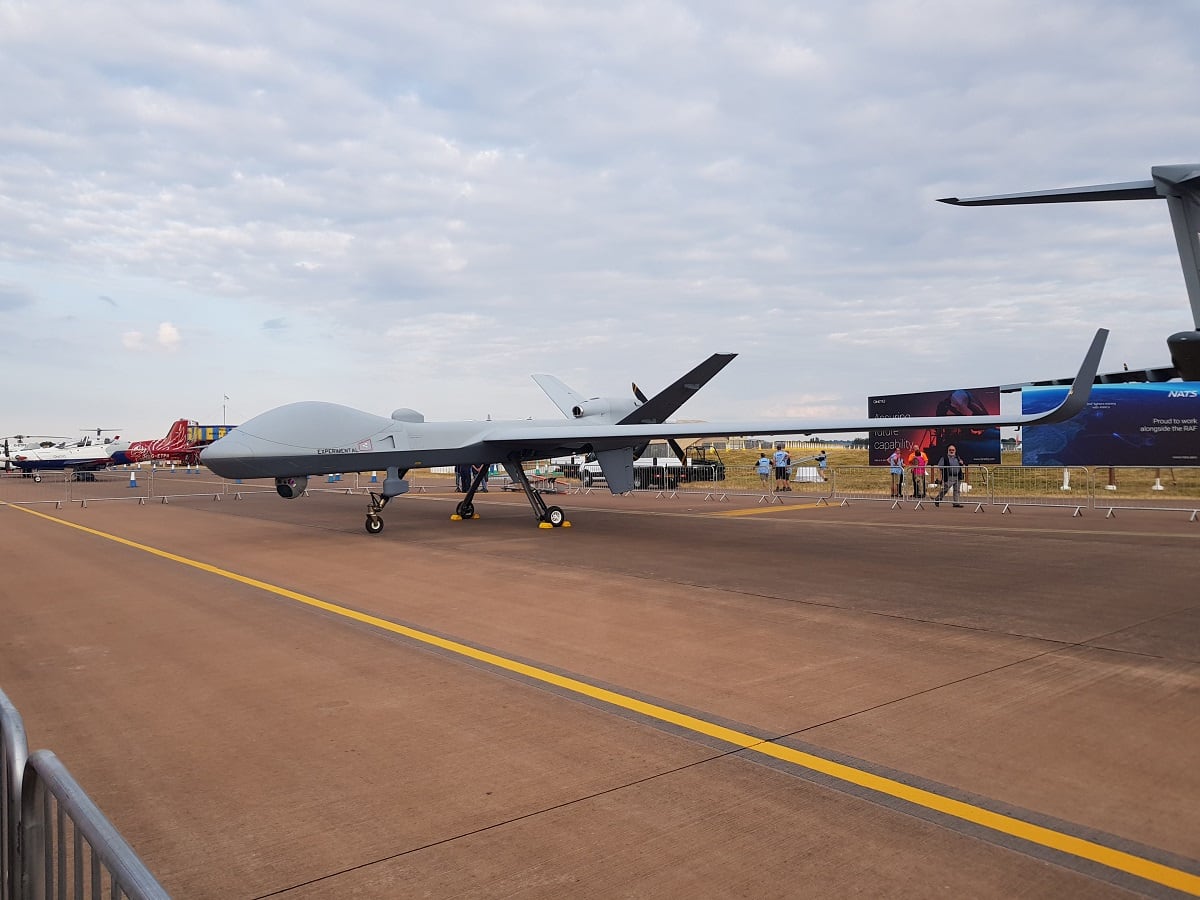Correction: A previous version of this story misidentified the cost increase to Britain’s Protector acquisition program. The program is said to now cost an extra £325 million, with £187 million of that attributed to a delivery delay.
LONDON — The British Defence Ministry’s top civilian has identified in a letter to lawmakers the reasons why a drone acquisition program has experienced a near 40 percent hike in costs.
The Ministry of Defence decided to delay by two years the delivery of 16 General Atomic Protector RG Mk1 drones to replace the Royal Air Force’s MQ-9 Reaper fleet, the letter to Parliament’s Public Accounts Committee said.
Stephen Lovegrove, the ministry’s permanent secretary, cited that decision as the main reason for the £325 million (U.S. $427 million) cost increase to the program, as £187 million of that could be attributed to the delay.
“The cost growth and time delay to the program imposed in July 2017 were outside of program tolerances but were the result of the need to ensure the affordability of the overall defence program,” Lovegrove wrote in his letter.
The MoD is currently in negotiations with the U.S. over a deal to build the first three of the 16 Protectors scheduled to be purchased for the RAF.
The final number of vehicles on order could eventually expand beyond 16 — subject to the MoD’s fragile finances in the coming years unless defense gets a sizable increase in the Conservative government’s next budget round due later this year.
The letter was sent Nov. 5 but has only recently been made public.
Lovegrove detailed further causes of the cost increase rise in the drone program, which was expected to cost £816 million when it was approved by the MoD in 2016.
RELATED

Aside from the increased costs caused by the delay, the letter said that the fall in the value of the pound against the dollar accounted for £50.8 million of the price rise, and a new primary sensor cost another £64 million. Other unspecified program costs accounted for a further £23 million.
The pound has firmed up against the dollar a little since the Conservative Party won the general election in December, which may lessen the impact of increased costs for the moment.
The new primary sensor investment involves provision of an improved electro-optical and infrared sensor. The letter said the investment was to avoid future obsolescence issues.
Consideration is still being given to the purchase of what is known as a “due regard air-to-air radar” designed for vital detect-and-avoid duties on the platform.
Protector, which is the British name for its version of the new General Atomics MQ-9B SkyGuardian, is scheduled to achieve initial operating capability in November 2023, the letter read.
The vehicle will replace the current fleet of MQ-9 Reapers, which the RAF has operated almost constantly during the last few years over Afghanistan and the greater Middle East.
Lovegrove said the MoD had compared Protector with other options to meet the requirement but the General Atomics platform remained the best value for money.
“A comparison was made between: developing a new remotely piloted aircraft system capability (either collaboratively or nationally); procuring the current Reaper Blk 5 (as used by the US Air Force and others); and procuring Protector,” he said.
“This concluded that procuring Protector represented best value for money, as its higher performance meant that the operational task could be delivered by procuring fewer air vehicles. The 2-year delay and resultant cost increase have not undermined this value for money case ... it remains affordable despite the cost growth,” the permanent secretary added.
Lovegrove said the biggest problem for the Protector program was not the platform itself but the availability of trained crew in the run-up to initial operating capability.
“The most significant risk to the Protector program is the RAF’s ability to generate and sustain the volume of trained personnel necessary to assure IOC in Nov 2023. The Protector work force builds on the current Reaper force; training and retaining sufficient remotely piloted aircraft system crews has historically proved challenging and is being closely monitored,” the letter said.
The Protector is expected to fly longer and hit harder than the Reaper. The UAV will also fly in nonsegregated airspace in places like the U.K .
in September, the MoD and General Atomics signed a significant deal to complete the test and evaluation activities required to fly the system in civil airspace. The first test and evaluation aircraft is due to be delivered next year subject to the successful completion of the production contract.
An initial production deal is currently in negotiation, with aiming of inking a deal in the next few months.
In a first for the system, the SkyGuardian version of the medium-altitude, long-endurance drone flew across the Atlantic Ocean in July from Grand Forks, North Dakota, to RAF Fairford in England. The flight covered 3,760 nautical miles in 24 hours and 2 minutes.
Andrew Chuter is the United Kingdom correspondent for Defense News.








